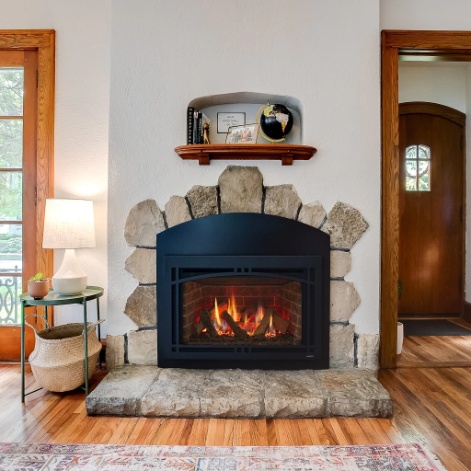Table of Contents
- 1 What Is a Pellet Stove?
- 2 What Is a Wood Stove?
- 3 How Do Pellet Stoves Work?
- 4 How Do Wood Stoves Work?
- 5 What Are the Differences Between Pellet Stoves and Wood Stoves?
- 6 Which Stove Is Right for Your Home?
- 7 What Are the Pros and Cons of Pellet Stoves?
- 8 What Are the Pros and Cons of Wood Stoves?
- 9 Which Stove Is Better for the Environment?
- 10 Can You Convert a Wood Stove to a Pellet Stove?
- 11 What Are Some Tips for Choosing and Maintaining a Stove?
- 12 Frequently Asked Questions
Looking to upgrade your home heating system but asking yourself: pellet stove vs wood stove: which is right for my home? This article delves into the key differences between pellet stoves and wood stoves.
We will cover fuel source, heating efficiency, maintenance, cost, and environmental impact.
By the end, you will have a clearer understanding of which stove aligns best with your heating needs, budget, convenience, and environmental considerations.
Tips on selecting and maintaining your chosen stove are provided to help you find a suitable heating solution for your home.
What Is a Pellet Stove?
A pellet stove is a type of home heating appliance that uses small, compressed pellets made from wood or biomass as a fuel source.
These stoves are recognized for their energy efficiency and environmentally friendly operation.
The operation of pellet stoves centers around the combustion of these pellets, which are automatically fed into the stove from a hopper.
As the pellets burn, they produce heat that is then dispersed throughout the room by a built-in fan.
The heating capacity of pellet stoves can vary based on the model, but they can efficiently warm a significant area.
Pellet stoves typically include a ventilation system that ensures proper air circulation, promoting effective heating and improved indoor air quality.
What Is a Wood Stove?
A wood stove is a traditional heating appliance commonly used for home heating that burns wood logs or pellets to generate heat.
These stoves provide a rustic charm and are often favored for their heating performance and sustainability.
Wood stoves are known for their high heating capacity, efficiently warming large spaces with ease.
Their design allows for radiant heat to be distributed evenly, creating a cozy atmosphere.
Regarding installation, wood stoves require proper venting to ensure safety and efficiency, usually through a chimney.
Maintenance is crucial for wood stoves, with regular cleaning of the flue and ash removal necessary to keep them functioning optimally.
In terms of heating options, wood stoves offer manual control over the fire, allowing users to adjust the intensity and duration of heat output according to their needs.
How Do Pellet Stoves Work?
Pellet stoves function by automatically feeding compressed pellets into a combustion chamber where they are ignited.
The heat produced is then dispersed throughout the area using a built-in fan and ventilation system.
How Do Wood Stoves Work?
Wood stoves operate by burning wood logs or pellets within a firebox to radiate heat into the room.
They depend on a chimney or flue system for ventilation and usually necessitate manual feeding of fuel.
What Are the Differences Between Pellet Stoves and Wood Stoves?
Pellet stoves and wood stoves vary in fuel sources, with pellets providing more controlled combustion in contrast to the manual feeding necessary for wood stoves.
Each type has its own distinct advantages and disadvantages that cater to diverse heating needs and preferences.
Fuel Source
The main distinction between pellet stoves and wood stoves is in their fuel sources.
Pellet stoves utilize compressed wood pellets, whereas wood stoves burn traditional wood logs or pellets.
Pellet stoves are often seen as more environmentally friendly because they primarily rely on renewable energy sources in the form of wood pellets.
These pellets are created from sawdust and other wood byproducts, which helps reduce waste and support sustainability.
Known for their high efficiency and automated features, pellet stoves allow for precise temperature control and require minimal maintenance.
In contrast, wood stoves, while offering a classic heating experience, can present challenges related to air quality and heating regulations due to emissions from burning wood.
Proper ventilation and adherence to heating regulations are essential when using wood stoves to minimize environmental impact and ensure safe operation.
Heating Efficiency
When comparing heating efficiency, pellet stoves are often more efficient than wood stoves due to their automated feeding system and controlled combustion.
This higher efficiency in pellet stoves means they can provide greater heating benefits while consuming less fuel compared to wood stoves.
Factors like insulation, climate, and maintenance also play a significant role in the overall performance of these heating appliances.
Pellet stoves are known for their consistent heat output and cleaner burn, enhancing both heating efficiency and safety.
It is important for homeowners to consider these factors when deciding between pellet stoves and wood stoves for their heating needs.
Maintenance and Cleaning
The maintenance requirements vary between pellet stoves and wood stoves.
Pellet stoves typically come equipped with automated cleaning systems, while wood stoves may need more frequent cleaning due to ash accumulation and manual fuel feeding.
Regular maintenance is essential for the optimal heating performance of both types of stoves.
For pellet stoves, key tasks include cleaning the ash pan, inspecting the exhaust system, and checking the auger.
On the other hand, wood stoves require regular cleaning of the firebox, flue, and chimney to prevent creosote buildup.
Additionally, both types of stoves need to have gaskets, fans, and motors checked for any signs of wear and tear.
Adhering to the manufacturer’s maintenance guidelines is crucial to ensure the longevity and efficiency of your heating system.
Cost
The cost considerations for pellet stoves and wood stoves vary based on factors such as initial installation costs, fuel expenses, and maintenance requirements.
Pellet stoves may have higher upfront costs but lower long-term expenses compared to wood stoves.
Wood stoves, while typically cheaper to install, often require more frequent maintenance and have higher heating costs due to the price of wood fuel.
On the other hand, pellet stoves, despite their higher initial investment, can be more cost-effective in the long run as pellets are generally more efficient and cleaner-burning.
When assessing heating options, it’s essential to factor in not only the purchase and installation costs but also ongoing operational expenses to make an informed decision on which type of stove best fits your budget and heating needs.
Environmental Impact
When comparing environmental impact, pellet stoves are typically seen as more eco-friendly than wood stoves because of cleaner combustion and lower emissions.
Wood stoves tend to generate more particulate matter, contributing to air pollution.
When making heating choices, sustainability is a key factor in reducing one’s carbon footprint.
Pellet stoves are often preferred for their renewable fuel source, as pellets are crafted from sawdust or recycled wood shavings.
This characteristic aligns with eco-friendliness and encourages a more sustainable heating option.
On the flip side, wood stoves depend on tree felling, which can negatively impact forest ecosystems and biodiversity, underscoring the environmental consequences of such heating devices.
Which Stove Is Right for Your Home?
The selection of the appropriate stove for your home depends on several factors including heating requirements, budget constraints, maintenance preferences, and environmental considerations.
An evaluation of these aspects is essential in determining whether a pellet stove or wood stove serves as the optimal heating solution for your space.
In assessing heating needs, it is crucial to consider the heating efficiency of each stove type.
Pellet stoves are recognized for their high efficiency as they burn compressed pellets, delivering consistent heat output.
Conversely, wood stoves provide a traditional, rustic charm and are effective in heating larger areas.
Sustainability is another important factor to contemplate, with certain models utilizing renewable resources like wood pellets.
Evaluating the heating capacity of each stove ensures its ability to adequately warm your home during colder seasons.
Consider Your Heating Needs
Determining heating needs involves assessing the size of the area to be heated and the desired heating capacity.
Pellet stoves are known for providing consistent heating, while wood stoves offer a more traditional radiant warmth experience.
When planning a heating installation, it is essential to consider factors like insulation and room layout to ensure effective heat distribution.
Evaluating the level of insulation in a space is crucial, as well-insulated areas typically require less heating output than poorly insulated ones.
Comparing the heating performance of various stove models can assist in finding a stove that meets specific heating needs.
Understanding these factors is key to selecting the most suitable stove that matches both heating requirements and space characteristics.
Evaluate Your Budget
Considerations related to budget are important when deciding between a pellet stove and a wood stove.
It is essential to evaluate the initial investment, ongoing operational costs, and overall expenses associated with each type to align with financial limitations and heating preferences.
Pellet stoves typically involve a higher upfront cost compared to wood stoves due to the advanced technology utilized in their operation.
While wood stoves require a lower initial investment, they necessitate more frequent fuel purchases, resulting in cumulative expenses over time.
On the contrary, pellet stoves offer a more consistent and efficient heat output, potentially leading to savings on fuel costs in the long term.
It is crucial to factor in maintenance expenses, as pellet stoves need regular servicing to uphold their efficiency.
Additionally, understanding heating regulations may impact the decision-making process, as certain regions may impose restrictions on allowable heating appliances.
Ultimately, assessing the heating advantages against the financial consequences can assist in making a well-informed decision that caters to both budgetary constraints and heating requirements.
Think About Maintenance and Convenience
When deciding between a pellet stove and a wood stove, it is important to consider maintenance requirements and convenience factors.
Evaluating the cleaning procedures, fuel handling, and overall operation can help ensure a heating experience that aligns with your lifestyle.
Pellet stoves have an advantage in maintenance due to their automated cleaning systems that reduce manual effort.
They typically feature an ash pan that requires periodic emptying and may need occasional maintenance of the auger and fans.
On the other hand, wood stoves require more frequent cleaning of ashes and chimney sweeping to prevent creosote buildup, which is essential for heating safety and efficiency.
Pellet stoves often come with a storage hopper for pellets, simplifying fuel management.
In contrast, wood stoves require ample space for storing firewood, which can impact convenience and space utilization in your home.
Consider Your Environmental Impact
Analyzing the environmental impact of heating options involves assessing the emissions, sustainability practices, and overall eco-friendliness of pellet stoves and wood stoves.
Choose a heating solution that matches your dedication to sustainability and environmental responsibility.
When deciding on a heating system for your space, take into account the ecological footprint of using pellet stoves compared to wood stoves.
Pellet stoves are recognized for their lower carbon emissions and utilization of renewable energy sources like wood pellets, making them a more environmentally conscious option.
Developments in heating technologies have led to increased efficiency and decreased environmental consequences.
It is essential to stay updated on environmental regulations related to heating appliances to ensure you select a sustainable option that minimizes harm to the environment.
What Are the Pros and Cons of Pellet Stoves?
Pellet stoves have several advantages, including efficient heating, automated operation, and eco-friendly combustion.
However, they may have higher upfront costs and require electricity to function, which could be potential drawbacks for some users.
The heating performance of pellet stoves is notable, offering consistent warmth and energy efficiency.
Their utilization of advanced heating technology enables precise temperature control and even heat distribution within a space.
Pellet stoves are recognized for their cleanliness, producing minimal ash and emissions in comparison to traditional wood-burning stoves.
Nevertheless, users should take into account ongoing maintenance expenses and pellet availability in their area when choosing this heating solution.
What Are the Pros and Cons of Wood Stoves?
Wood stoves offer excellent heat output, a traditional ambiance, and independence from electricity as key benefits.
They require manual feeding of fuel, regular cleaning, and may produce more emissions compared to pellet stoves.
One significant advantage of using wood stoves for home heating is their cost-effectiveness.
Wood is often more affordable than other heating fuels, which can help reduce heating costs over time.
Wood stoves can continue to provide warmth even during power outages, making them a reliable heating option.
On the downside, the manual labor involved in feeding the stove with wood, along with the need for regular cleaning and maintenance, can be seen as operational challenges.
The emissions produced by burning wood can contribute to air pollution and environmental concerns, impacting both indoor and outdoor air quality.
Which Stove Is Better for the Environment?
When comparing the environmental impact, pellet stoves are generally considered more environmentally friendly than wood stoves due to cleaner combustion and lower emissions.
Opting for a pellet stove can help promote sustainability and reduce air pollution.
Pellet stoves are recognized for their fuel-burning efficiency, resulting in less waste and lower carbon emissions when compared to traditional wood stoves.
The production of pellets often involves the use of recycled wood waste or sustainable sources, further enhancing their eco-friendly characteristics.
On the other hand, wood stoves may release higher levels of particulate matter into the air, which can contribute to air quality issues and health risks.
The sourcing of firewood for wood stoves can also lead to deforestation and habitat destruction, underscoring the importance of considering the environmental impact when making heating choices.
Can You Convert a Wood Stove to a Pellet Stove?
Converting a wood stove to a pellet stove can be achieved through retrofit kits or professional installation services.
This conversion offers homeowners the opportunity to enhance their heating system by transitioning to a more efficient and automated solution without the need to replace the entire system.
The process of retrofitting a wood stove to a pellet stove typically involves the installation of a pellet burner assembly into the existing wood stove’s firebox.
This installation usually includes adding a hopper for the pellets and a motorized auger system to feed the pellets into the burner.
By making this conversion, individuals can experience the advantages of cleaner and more consistent heating operation.
Additionally, upgrading to a pellet stove may result in long-term cost savings due to the enhanced efficiency and reduced emissions associated with pellet fuel.
What Are Some Tips for Choosing and Maintaining a Stove?
When selecting and maintaining a stove, individuals should consider factors such as heating efficiency, fuel availability, and regular upkeep for optimal performance.
Following manufacturer guidelines for installation, cleaning, and maintenance is essential to ensure safe and efficient operation of the heating appliance.
It is important to determine the appropriate size stove for the space intended to be heated.
Selecting a stove that is too small may lead to insufficient heat output, while choosing one that is too large can result in wasted energy.
Regarding fuel sources, individuals should be aware of local heating regulations to ensure compliance and safety.
Regular inspection and cleaning of the pellet or wood stove, including the chimney and venting system, are necessary to prevent buildup that could pose a fire hazard.
Frequently Asked Questions
1. What is the difference between a pellet stove and a wood stove?
A pellet stove burns compressed wood pellets as fuel, while a wood stove burns chopped wood logs. This results in differences in efficiency, maintenance, and cost.
2. Which is more cost-effective: a pellet stove or a wood stove?
It depends on your specific situation. While pellet stoves tend to have higher upfront costs, they are more efficient and require less maintenance than wood stoves. However, if you have access to free or cheap firewood, a wood stove may end up being more cost-effective in the long run.
3. Which type of stove produces more heat: a pellet stove or a wood stove?
Pellet stoves are typically more efficient at converting fuel into heat compared to wood stoves. However, wood stoves can produce a more intense and immediate heat due to the type of fuel they use. It ultimately depends on your heating needs and preferences.
4. Do pellet stoves or wood stoves produce more air pollution?
Pellet stoves are considered to be cleaner and produce less air pollution compared to wood stoves. This is because they burn pellets made from sawdust and other wood byproducts, resulting in a more efficient and cleaner burn. However, both types of stoves still produce some level of air pollution.
5. Which type of stove requires more maintenance?
Generally, wood stoves require more maintenance, as they require regular cleaning and removal of ash and creosote buildup. Pellet stoves have automatic cleaning mechanisms and produce less ash, resulting in less frequent maintenance needs.
6. Can I use the same venting system for both a pellet stove and a wood stove?
No, pellet stoves and wood stoves require different types of venting systems. Pellet stoves use a smaller, specialized vent pipe while wood stoves use larger, more traditional chimneys. It’s important to follow the manufacturer’s instructions for proper venting installation.
7. Are pellet stoves more environmentally friendly than wood stoves?
Yes, pellet stoves are generally considered more environmentally friendly due to their cleaner combustion and lower emissions. They burn renewable wood pellets and produce less particulate matter compared to wood stoves.
8. How do pellet stoves maintain heat efficiency?
Pellet stoves maintain heat efficiency through their automated feeding system, allowing for controlled combustion. This results in a consistent heat output with less fuel consumption.
9. Is it possible to convert a wood stove into a pellet stove?
Yes, you can convert a wood stove to a pellet stove using retrofit kits or professional installation services. This conversion allows homeowners to upgrade to a more efficient heating system without full replacement.
10. What factors should I consider when choosing between a pellet stove and a wood stove?
You should consider heating needs, budget, maintenance preferences, and environmental impact. Each stove type has its own advantages that cater to different heating requirements and preferences.
Latest Articles

What Is An NG (Natural Gas) Indicator And Why You Need It For Your Fireplace
Table of Contents1 Understanding Natural Gas Fireplaces2 What is an NG Indicator?3 Importance of NG Indicators for Safety4 Types of NG Indicators5 Installation and Maintenance of NG Indicators6 Signs of a Faulty NG Indicator7 Frequently Asked Questions Natural gas fireplaces are a favored option among numerous homeowners due to their convenience and effectiveness. But, what is an NG (Natural Gas) indicator and why you need it for your fireplace? It is imperative to comprehend how they function and the significance of having an NG (Natural Gas) indicator for safety purposes. This article delves into the definition and significance of NG indicators. We will discuss the potential hazards associated with the absence of one and the various types of indicators accessible. Also, we will discuss installation and maintenance recommendations, and methods to recognize and rectify issues with malfunctioning indicators. Stay well-informed and ensure the safety of your home by referring to this exhaustive guide. Understanding Natural Gas Fireplaces Natural gas fireplaces serve as an efficient and convenient heating option for numerous households. They utilize natural gas as a fuel source to deliver consistent warmth and ambiance. How They Work and Why They Need NG Indicators The operation of natural gas fireplaces involves igniting natural gas to generate heat. This process requires diligent monitoring to ensure both safety and efficiency, a task facilitated by the use of NG indicators. NG indicators play a critical role in detecting potential gas leaks. They enable residents to promptly address and mitigate any associated hazards. Through continuous monitoring of gas levels and providing timely warnings and alerts, NG indicators uphold a secure indoor environment. It is imperative to ensure that these indicators function properly to facilitate the effective operation of natural gas fireplaces. This helps mitigate the inherent risks linked to gas leaks. What is an NG Indicator? An NG indicator is a specialized device equipped with advanced sensors and technology. It is specifically designed to detect natural gas leaks and monitor gas pressure in appliances, such as fireplaces. Definition and Purpose The NG indicator functions as a detector that monitors gas appliances for potential leaks. It provides essential functionality to ensure safety in households utilizing natural gas. These detectors play a crucial role in protecting residences by notifying occupants of dangerous gas leaks long before they escalate into perilous situations. Through continuous monitoring of gas levels in the vicinity, NG indicators offer an additional layer of protection. This is particularly important in properties that rely on gas-operated fireplaces or stoves. These devices not only help avert potential disasters but also enhance the overall peace of mind of homeowners. They assure them that their living spaces are equipped with reliable safety features. Importance of NG Indicators for Safety Natural gas indicators are essential for maintaining safety in households equipped with natural gas appliances. These devices serve as a proactive measure to promptly detect gas leaks. This offers homeowners a sense of security and assurance. Potential Dangers of Not Having an NG Indicator The absence of an NG indicator in residences equipped with natural gas appliances can pose significant hazards. This includes the risk of undetected gas leaks , carbon monoxide poisoning , and pilot outages that may lead to dangerous situations. These potential risks can profoundly impact indoor air quality. They directly influence the health and safety of individuals residing in the household. Undetected gas leaks can go unnoticed, gradually permeating the air and creating a potentially explosive environment. Insufficient ventilation from undetected exposure to carbon monoxide can lead to serious health complications. These range from mild symptoms such as dizziness to fatal poisoning. Without proper monitoring from an NG indicator, families are left susceptible to these concealed threats. This underscores the critical importance of implementing proactive measures to mitigate such risks. Types of NG Indicators Indicators for Natural Gas (NG) are available in diverse types. Each presents distinct detection capabilities tailored to specific requirements, encompassing both manual and automated alternatives. Manual vs. Automatic Indicators Manual NG indicators require user intervention for monitoring gas levels and identifying leaks. On the other hand, automatic indicators employ sophisticated technology to deliver continuous, real-time monitoring. This heightened efficiency and oversight enhance safety protocols. Conventional manual indicators rely on individuals to physically inspect and evaluate gas levels periodically. This renders them more susceptible to human errors. Conversely, automatic indicators feature sensors capable of promptly detecting even the most minute fluctuations in gas levels. This establishes a more dependable and precise monitoring mechanism. Automatic indicators can activate alerts and shut-off systems upon detecting a leak. This ensures immediate action to avert potential hazards. This advanced technology enhances safety protocols and instills a sense of command and assurance among users. Installation and Maintenance of NG Indicators The reliable and accurate performance of NG indicators necessitates proper installation and consistent maintenance. This often entails professional installation and adherence to recommended service guidelines. Proper Installation and Regular Maintenance Tips The proper installation of NG indicators involves adhering to the specifications in the user manual. Maintenance protocols entail strict adherence to a predetermined maintenance schedule to ensure sustained operational efficiency. During the installation phase, it is imperative to verify that the NG indicators are securely affixed in the designated location as stipulated by the manufacturer. Crucial steps include confirming power source compatibility and ensuring proper grounding of the device to optimize performance. Calibration of the indicator must be executed meticulously to ensure precise readings. Regarding maintenance, essential practices include regular inspection for signs of wear, thorough cleaning of the indicator components, and routine functionality tests. By allocating time to a consistent maintenance regimen, the NG indicator can operate with optimal efficiency over an extended duration. Signs of a Faulty NG Indicator Recognizing indicators of a malfunctioning NG indicator is essential for upholding safety and performance standards. Inaccuracies and detection issues can undermine the efficacy of these devices. Identifying and Addressing Issues The process of identifying and addressing issues related to NG (natural gas) indicators requires a systematic troubleshooting approach. This ensures their optimal performance

What You Need To Know About Gas Log Set Safety And Installation Considerations
Table of Contents1 Understanding Gas Log Sets2 Safety Considerations for Gas Log Sets3 Installation Guidelines for Gas Log Sets4 Maintaining and Troubleshooting Gas Log Sets5 Frequently Asked Questions Gas log sets are a favored option among homeowners seeking to enjoy the comfort and atmosphere of a conventional fireplace without the inconvenience of wood. This article tells you what you need to know about gas log set safety and installation considerations. Before incorporating one into your residence, it is imperative to understand the safety considerations associated with their use. This discussion delves into the potential hazards linked with gas log sets. It presents crucial precautions to uphold the safety of your home. Also, it outlines proper installation procedures and offers insight into common errors to avoid. Finally, it provides advice on maintenance and troubleshooting. Gain comprehensive knowledge on gas log set safety and installation considerations. Understanding Gas Log Sets Comprehending gas log sets is essential for individuals seeking to elevate their fireplace experience, and for gas lag set safety and installation. These heating appliances can operate on either natural gas or propane. In addition, they are available in a range of styles, including vented, ventless, and vent-free options. They provide an array of benefits and customization opportunities through various fireplace accessories. What are Gas Log Sets? Gas log sets are meticulously crafted artificial logs. They are designed to imitate the appearance and functionality of authentic wood logs within fireplaces. These gas log sets typically consist of ceramic or refractory concrete logs that have been skillfully molded and painted. This allows them to replicate the natural grain and texture of real wood. The logs are arranged in various configurations within the fireplace. They establish a realistic and welcoming ambiance. In addition to the logs, gas log sets often include fireplace accessories such as glowing embers. Accessories also include decorative stones, and even pine cones to enhance the overall aesthetic appeal. Homeowners can select from an array of placement options. These include traditional wood stack, cascading driftwood, or a contemporary geometric arrangement. Homeowners can align their preferred style and design preferences. Safety Considerations for Gas Log Sets Safety considerations for gas log sets are of utmost importance to guarantee a secure and pleasant fireplace experience. It is essential to address potential hazards such as carbon monoxide exposure, gas leaks, and fire safety to maintain a safe environment for homeowners. Potential Hazards and Precautions Gas log sets come with potential hazards that must be taken seriously, including the risks of gas leaks, carbon monoxide poisoning, and fire incidents. It is imperative to establish and adhere to rigorous safety measures to ensure the well-being of individuals and properties involved in the use of gas log sets. Gas leaks represent a significant hazard when utilizing gas log sets. They can result in the accumulation of combustible gas within the premises, heightening the possibility of explosions or fires. Carbon monoxide, an insidious gas generated during incomplete combustion, poses a grave threat due to its colorless and odorless nature, making it undetectable without proper monitoring. To address these risks effectively, it is vital to install carbon monoxide detectors and gas leak sensors in the vicinity of the gas logs. Routine maintenance checks on the gas log system, including cleaning and inspection procedures, are critical to ensure safe operations and the prompt identification of potential issues. In case of a gas leak or suspected presence of carbon monoxide, immediate evacuation of the affected area is paramount, followed by prompt contact with emergency services. Recognizing the distinct odor of rotten eggs associated with natural gas can serve as an early warning sign, prompting swift actions to avert any potential accidents. Installation Guidelines for Gas Log Sets The installation of a gas log set necessitates meticulous planning and strict adherence to specific guidelines. This includes verifying a secure gas connection, ensuring proper gas lines are in place, and complying with local building codes. Often, the complexity of these requirements may require the expertise of a certified technician. Proper Installation Techniques The appropriate installation procedures for gas log sets involve the secure connection of gas lines, meticulous adherence to installation manuals, and strict compliance with local building codes. It is imperative to prioritize the guarantee of secure gas connections to avert leaks and potential safety hazards. During the installation of gas log sets, utilizing suitable sealants and fittings is essential to establish a tightly sealed connection. The correct installation of gas lines is critical for both the safety and operational efficacy of the gas log set. Reference to the installation manual is highly advisable for detailed, step-by-step guidance to prevent inaccuracies and ensure the successful establishment of the gas log set. Consistently adhering to building codes and regulations upholds safety standards. Seeking guidance and confirmation from a certified technician before and after installation can offer invaluable support and assurance throughout the process. Common Installation Mistakes to Avoid It is imperative to avoid common installation errors to ensure the secure and effective operation of gas log sets. This includes verifying proper gas connections and compliance with building codes. Improper gas connections can result in leaks and potential hazards, underscoring the importance of verifying the tightness and correct alignment of all fittings. Failure to adhere to building codes can lead to structural complications, penalties for non-compliance, or even safety concerns. To prevent these oversights, it is advised to consult the manufacturer’s installation guidelines and strictly adhere to local regulations. Engaging a certified technician for the installation of gas log sets guarantees that the procedure is carried out accurately and securely. This provides assurance that the system is functioning as intended. Maintaining and Troubleshooting Gas Log Sets Regular maintenance and troubleshooting of gas log sets are imperative to uphold their optimal performance and safety. This includes thorough examination of the pilot light, pilot assembly, and other gas appliances to preserve heating efficiency and promptly resolve any arising issues. Tips for Maintenance and Repair Ensuring the proper maintenance of your gas log set necessitates conducting

Key Considerations For Using Compressed Liquid Propane In Fireplace Installation
Table of Contents1 What is Compressed Liquid Propane?2 Benefits of Using Compressed Liquid Propane in Fireplaces3 Safety Precautions for Installing Compressed Liquid Propane Fireplaces4 Installation Process for Compressed Liquid Propane Fireplaces5 Maintenance and Care for Compressed Liquid Propane Fireplaces6 Alternative Fuel Options for Fireplaces7 Frequently Asked Questions If you are contemplating the use of compressed liquid propane in your fireplace installation, this discussion will delve into the advantages of adopting this alternative fuel option. These benefits include enhanced efficiency, cost savings, and important safety precautions to consider. Furthermore, a detailed step-by-step guide on the installation process will be provided, along with recommendations for maintenance and care. A comparison of various fuel options for fireplaces will also be conducted to assist you in making an informed decision. We encourage you to stay engaged to gain insights into optimizing your fireplace’s capabilities with compressed liquid propane. What is Compressed Liquid Propane? Compressed Liquid Propane is a versatile energy source contained in a high-pressure propane tank. It finds extensive utility in both residential and commercial settings, prominently including fireplaces. Recognized for its convenience and efficiency, Compressed Liquid Propane emerges as a favored option for heating residential spaces and facilitating culinary pursuits across various environments. Additionally, it serves as a viable fuel substitute in vehicular contexts, portable cooktops, and outdoor grilling scenarios due to its propensity for clean combustion. The attribute of portability, coupled with ease of storage, positions Compressed Liquid Propane as an optimal energy source for individuals residing off the conventional grid. It is also great for engaging in outdoor activities such as camping and recreational vehicle (RV) travel. Moreover, the high energy density inherent to Compressed Liquid Propane renders it a dependable choice for sustaining generators during instances of power disruptions. Benefits of Using Compressed Liquid Propane in Fireplaces Utilizing Compressed Liquid Propane for fireplace installation presents several benefits. These include enhanced fuel efficiency, convenience, cost-effectiveness, and a favorable environmental footprint. These attributes render it a recommended option for heating solutions, applicable to both on-grid and off-grid settings. Efficiency and Cost Savings The utilization of Compressed Liquid Propane in fireplaces offers significant advantages, notably in terms of high fuel efficiency and cost-effectiveness. These attributes are underscored by the exceptional BTU rating and overall heating efficiency of Compressed Liquid Propane. The elevated fuel efficiency exhibited by Compressed Liquid Propane fireplaces necessitates less fuel to generate the same level of heat compared to traditional wood-burning fireplaces or electric heating systems. Consequently, homeowners can realize cost savings on their heating expenditures over an extended period. Moreover, the clean-burning characteristics of propane minimize maintenance costs linked to soot and ash cleanup. This further enhances the cost-effectiveness of employing propane fireplaces. Safety Precautions for Installing Compressed Liquid Propane Fireplaces Ensuring safety is of utmost importance during the installation of Compressed Liquid Propane fireplaces. This requires strict adherence to safety regulations, meticulous attention to proper ventilation requirements, careful control of ignition sources, and the incorporation of carbon monoxide and gas leak detection systems. Important Safety Measures Essential safety protocols for the installation of Compressed Liquid Propane fireplaces encompass adherence to fire safety regulations. Engaging in professional assessments and employing sophisticated gas leak and carbon monoxide detection mechanisms is crucial. Professional evaluations play a critical role in identifying any prospective hazards or irregularities within the fireplace infrastructure. These assessments are vital in ensuring the operational integrity of all components and compliance with safety protocols. Routine inspections serve to forestall potential fire incidents, gas discharges, or carbon monoxide emissions that could pose significant threats to both the property and individuals in the vicinity. The utilization of advanced gas leak and carbon monoxide detection systems serves as an additional safeguard by promptly notifying occupants of any elevated levels of these hazardous gases. Installation Process for Compressed Liquid Propane Fireplaces The installation procedure for Compressed Liquid Propane fireplaces encompasses several critical steps. These include: Adhering to installation guidelines Correctly positioning the propane tank Ensuring precise gas line installation Optimizing heat output Monitoring pressure regulation Establishing the pilot light Step-by-Step Guide The installation process of Compressed Liquid Propane fireplaces involves a systematic approach. This begins with the construction of the firebox, followed by the installation of the gas control valve, setup of the ignition system, design of the flue, and verification of a suitable combustion air supply. The construction of the firebox assumes critical importance as it serves as the foundation of the fireplace structure. It securely holds the combustible materials in place. Subsequently, the gas control valve plays a key role in managing the propane flow, guaranteeing safe and efficient operation. The installation of the ignition system facilitates convenient and reliable fire initiation. Designing the flue is a necessary step to direct exhaust gases outside, thus preventing their accumulation indoors. Moreover, ensuring a proper combustion air supply is essential to sustain optimal burning conditions and enhance fuel consumption efficiency. Each component contributes significantly to the functionality and safety of the fireplace installation process. This underscores the importance of meticulous attention to detail and adherence to established protocols. Maintenance and Care for Compressed Liquid Propane Fireplaces Consistent maintenance and attention to Compressed Liquid Propane fireplaces are imperative to guarantee their optimal functionality. This includes adherence to prescribed maintenance protocols, regular chimney upkeep, prevention of soot accumulation, and scheduling of routine propane deliveries and professional inspections. Tips for Keeping Your Fireplace in Good Condition For the maintenance of your Compressed Liquid Propane fireplace, it is essential to conduct regular checks on ignition sources. Monitor flame appearance, clean the gas burner and pilot assembly, and verify the correct operation of the safety shut-off valve. The inspection of ignition sources requires a detailed examination of the electronic igniter. This helps identify any signs of damage or corrosion and ensures proper sparking upon activation. Monitoring flame appearance involves observing a consistent blue flame with minimal flickering, which signifies efficient combustion. Cleaning the gas burner and pilot assembly can be performed using a soft brush or compressed air to eliminate any dirt or debris that may


















































































